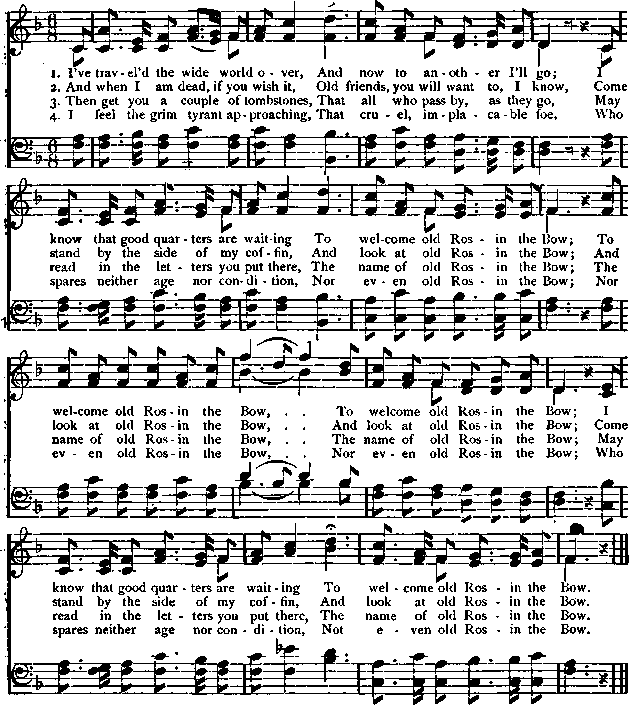Franklin Square Song Collection - online songbook
200 favorite songs and Hymns for Schools, Homes Lyrics & Sheet Music
| Share page | Visit Us On FB |
|
48 |
FRANKLIN-SQUARE SONG COLLECTION. |
|||
|
How They Move.—If we are now able to picture to ourselves one set of waves going to the wall, and another set returning and crossing them, we will be ready to understand something of the very difficult question, How is it that we can hear many different sounds at one time and tell them apart? Have you ever watched the sea when its surface is much ruffled, and noticed how, besides the big waves of the tide, there are numberless smaller ripples made by the wind blowing the surface of the water, or the oars of |
a boat dipping in it, or even rain-drops falling? If you have done this you will have seen that all these waves and ripples cross each other, and you can follow any one ripple with your eye as it goes on its way undisturbed by the rest. Or you may make beautiful crossing and recrossing ripples on a pond by throwing in two stones at a little distance from each other, and here too you can follow any one wave on to the edge of the pond. Now, just in this way the waves of sound, in their manner of moving, cross |
|||
|
OLD ROSIN THE BOW |
||||
 |
||||
|
|
||||
|
and recross each other. You will remember too, that different sounds make waves of different lengths, just as the tide makes a long wave and the rain-drops tiny ones. Therefore each sound falls with its own peculiar wave upon your ear, and you can listen to that particular wave just as you look at one particular ripple, and then the sound becomes clear to you.
Audubon, as he camped in the forest, found the song of the whippoorwill one of the most delightful |
sounds of nature, sweeter to him than that of the nightingale. Musicians have frequently attempted to write out the songs of birds. Wilson Flagg has thus embalmed the songs of nearly all our feathered minstrels. Handel has done kindred work for the nightingale. In the second quartet of the Minuet, Mozart incorporated the cackle of the domestic fowl, while Haydn, in his twentieth quartet, gives, with ef-feet, the joyous note that announces a new-laid egg. |
|||